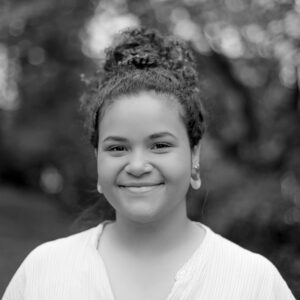MIT Students Make STEM Come Alive for Boston Middle Schoolers in Free, Virtual Camp Just Before School Reopens
By Marianna McMurdock | September 10, 2021
More than 65 Boston Public School middle schoolers returned to classrooms this week with a reignited passion for STEM, having just finished a summer camp run by Massachusetts Institute of Technology undergraduates.
From Aug. 16 through 27, two groups of rising sixth- through ninth-graders embarked on a weeklong intensive STEM camp dubbed DynaMIT, a play on the school’s name. Founded in 2012 and now organized by about 15 students enrolled in perhaps the country’s most premier tech university, the free program brings critical thinking, design, science and engineering concepts to life for young people who have never participated in STEM programs before.
Each afternoon, campers worked on individual capstone projects. Boston Latin’s Steven Miall coded a roleplay game in Scratch where a traveler decides between paths in the jungle, ultimately making it out safely or perishing by tiger or hunger.
“I didn’t know how to do any Scratch before the program, and at the end, I was really, I guess fluent,” Miall said of his 2019 cohort experience. “Knowing how to use Scratch could help with other different languages of computer science in the future.”
“We have a lot of access to technological resources and education,” DynaMIT’s 2021 co-director and MIT senior Daniel Zhang said. He described their mission as utilizing their school’s resources to “bring excitement about STEM” to students who don’t have the economic opportunity to participate in similar paid programs.
Roughly 78 percent of Boston Public School students are low income, and many of the city’s usual hands-on summer STEM programs were cancelled this year out of caution for the pandemic’s changing conditions. The decision to make the camp virtual for the second summer in a row was made in accordance with MIT policy, and enabled 10 out-of-state students to participate for the first time.
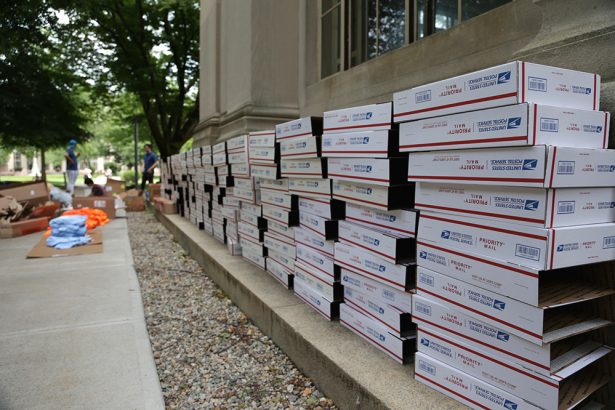
Jacksonville, Florida 9th-grader Emma Lee found DynaMIT in an online search for summer opportunities where she could try her hand at all STEM subject areas, hoping to hone her interests. She said that this summer was the first time she’d been in an environment with so many kids with similar interests to hers.
“Here in Florida, I don’t think there are as many opportunities from the colleges because they’re mainly up North,” Lee said. “Ever since I was little, I’ve always been pretty interested in STEM. I really want to be one of those pioneering females in the future.”
Throughout the academic year, MIT student board members write grants, develop curricula and recruit and train 40 mentors to maintain their 2-to-1 student ratio. In Zoom breakout rooms, no more than two to three mentors and four to six students form a “family” for “personalized guidance and attention” and deeper relationships, Zhang said.
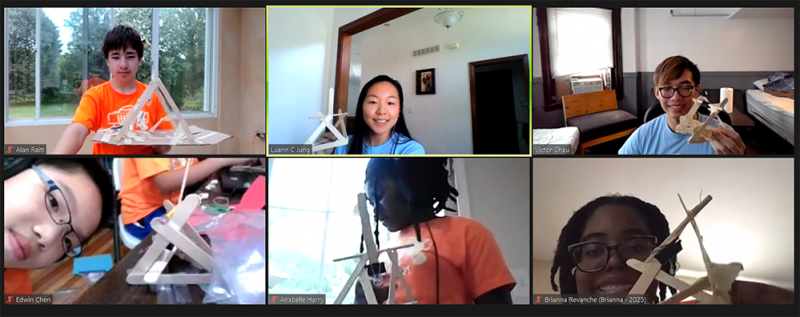
Programming begins with icebreakers and time for students and mentors to check in, and each day focuses on a new subject: math, astronomy, biology, chemistry and finally mechanical engineering. DynaMIT also hosts career panels, inviting scientists and researchers from the university to talk about their professional journeys.
In-person cohorts from past years have witnessed a Faraday cage in action — the conductive box redirects electric charges away from whatever’s safely inside, much like a car in a lightning storm. Until 2019, students also toured a pharmaceutical laboratory, Novartis, where many used pipettes for the first time. The company is one of DynaMIT’s local partners, and provided some materials for this year’s 116 at-home science kits.
Mentors prepared and mailed the packages, which included popsicle sticks for mini hydraulic lifts and modeling clay for human organ simulations, to students’ homes. For some activities, students also experimented with objects around the home, like trying to determine the acidity of cleaning fluids in a pH scavenger hunt.
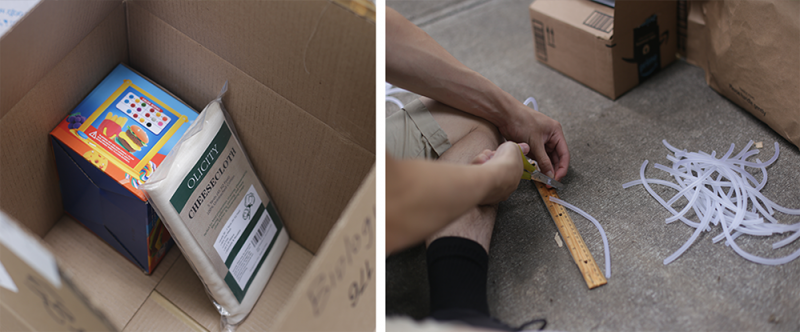
DynaMIT’s smaller class sizes and final projects, which encouraged students to lean into their interests, helped them stay engaged via Zoom after another virtual school year. When comparing 2019 and 2021 test scores across the country, education researchers estimate deep learning losses in math, with low-income students appearing more adversely affected than their high-income peers.
From space camps in Texas, where less than half of students reach grade-level thresholds in science, to video game coding programs, families sought out STEM opportunities to try to mitigate learning deficits and re-engage the younger generation this summer.
In Massachusetts, parents widely supported summer school as a way to boost STEM mastery — the state even committed $70 million for enhanced summer learning. And Boston students are eager for more opportunities like DynaMIT, to replace Zoom lectures with project-based learning.
“It was just more personal. The way that it was taught was more of a pick your route, and choose how you want to do things, which I like a lot more than the traditional science class where it’s like, ‘This is your assignment, this is what you learn about,’” said 8th-grader Hannah Steves, a 2020 virtual alum interested in pursuing environmental engineering.
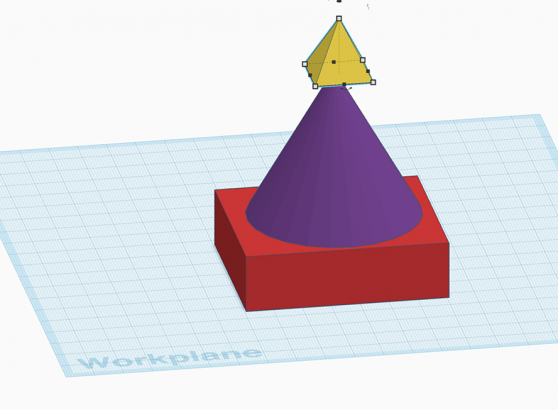
The organization is in the process of surveying alumni from the past decade to measure impacts. Of the 70 alum respondents, roughly 63 percent say DynaMIT has had a strong or very strong influence on their future career aspirations, according to survey results.
Willers Yang, a first-generation college student and 2021 co-director, said they try to excite an interest in all kinds of science — from coding and psychology to chemistry — before students internalize ideas about the difficulty or accessibility of those careers. Black and Hispanic/Latino people are the most underrepresented in STEM fields.
“DynaMIT is probably a good program to lead students back to school in the sense that we’re not structuring our days as lectures, we’re structuring our days as a sequence of activities and experiments that they can have fun building …,” Yang said. “Showing them that they can have a place in STEM in the future as a scientist or engineer, giving them a closer look.”
Get stories like these delivered straight to your inbox. Sign up for The 74 Newsletter

